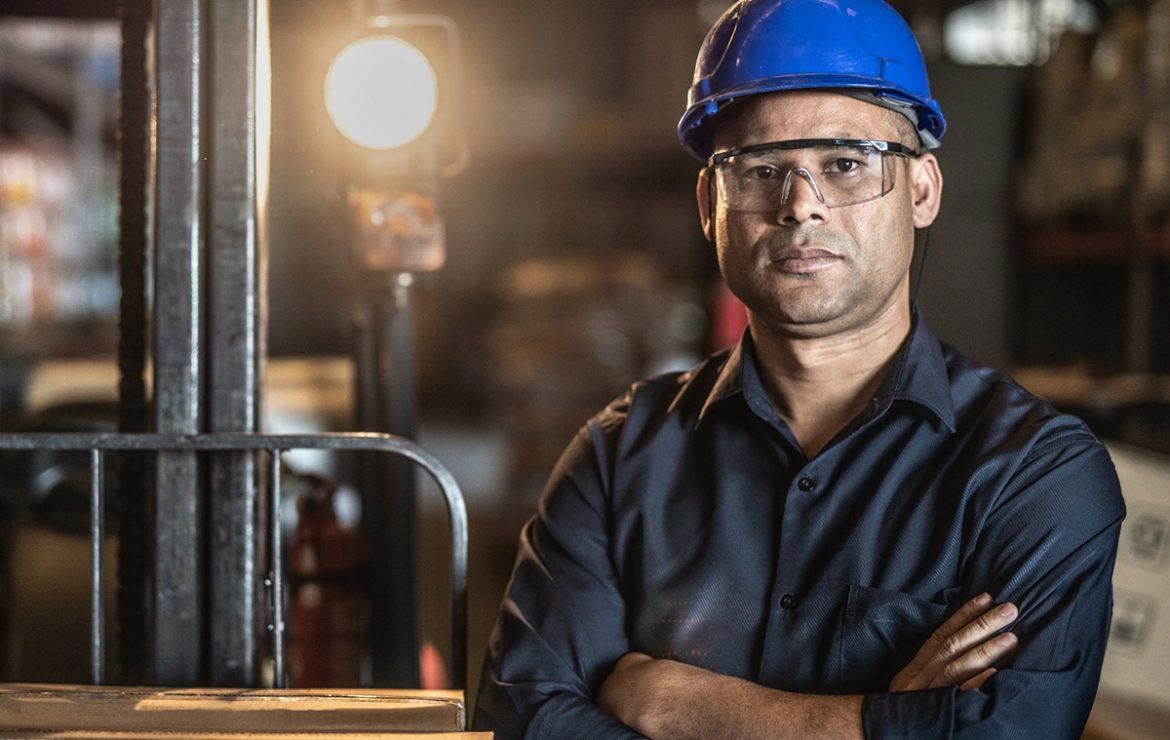If You Don’t Speak Your Injured Worker’s Language, They’ll Find a Lawyer Who Does

No employer wants to see their employees injured and out of work, and no worker wants to be stuck at home worrying about the longterm consequences of both their injury and their time away from the job. A fast return-to-work is good for everyone.
Healing, however, is just as psychological as it is physical. When an injured worker doesn’t fully understand the workers’ compensation process, they feel uncertainty, fear and anxiety. That can lead to missed appointments, lack of adherence to treatment plans, or lost motivation to get better.
The employer has a critical role to play here. By showing compassion and ensuring that injured workers understand their situation, employers can reduce or eliminate psychological barriers from the get-go.
When employees speak a different language, however, that can be a tall order to fill.
“Speaking a person’s language is the first step to building trust. And without trust it’s impossible to be genuinely compassionate, which often drives much better outcomes,” said Janet Kus, President & Founder of MTI America.
According to the Bureau of Labor Statistics, “in 2017, there were 27.4 million foreign-born persons in the U.S. labor force, comprising 17.1 percent of the total.”
Non-English-speaking immigrant workers are prevalent in what Kus described as “3D” jobs — Dirty, Dangerous and Demanding. These are the jobs that many native-born Americans don’t want to do, but are vital in some of the nation’s most critical industries: agriculture, construction, transportation, and food, textile, and automotive manufacturing.
It’s no surprise, then, that immigrant workers are 15 percent more likely to be fatally injured on the job compared to their native-born counterparts. Language barriers are one reason for the increased risk, but employers can eliminate those barriers, improve safety, and promote speedy recovery by choosing the right interpreter partner.
Speaking a person's language is the first step to building trust. And without trust, it's impossible to be genuinely compassionate.
HOW LANGUAGE BARRIERS IMPERIL WORKER WELLBEING
Misunderstandings arising from language barriers increase the risk that an immigrant worker will not understand safety training materials or be able to communicate effectively with their co-workers. In industries like construction and agriculture where heavy machinery is prevalent, miscommunication can be fatal.
“If a construction worker does not understand how to operate machinery, the odds of potential injury increase tenfold,” Kus said.
When injuries do occur, immigrants in the U.S. illegally are unlikely to report their injury or seek professional care due to fear of being detained and due to a lack of understanding of the workers’ comp process. Language barriers can also make the prospect of interacting with doctors and other healthcare professionals quite daunting. This not only impairs recovery, but also increases the likelihood of re-injury.
Even when the injuries are reported and the worker sees a doctor, he or she may not understand why certain medications are being prescribed or what other steps they should take to rehabilitate.
Literacy challenges could prevent an injured worker from understanding the medical terminology used to explain his diagnosis, test results, prescriptions and treatment plan. Part of the U.S.’s opioid problem stems from people not understanding the instructions on the label.
“Every aspect of the process is harder or doesn’t work. It makes compliance much more difficult and less successful,” Kus said.
Because they are ripe for errors that ultimately disadvantage the injured worker, these cases attract plaintiffs’ attorneys who do speak the immigrant workers’ language. Many workers’ comp claims involving non-Englishspeaking immigrant workers end up in court, adding time and cost to a claim while doing nothing to bring an injured worker closer to recovery.
While the ability to speak the worker’s language won’t eliminate all the issues above, it will go a long way to solving many of these unique challenges. Overall, about 21 percent of injured workers need translation services in order to successfully recover and return to work.
THE VALUE OF PROFESSIONAL TRANSLATION SERVICES
Employers of immigrant workers too often forgo formal interpretation services when they have other bilingual employees on staff who can act as stand-in translators.
But “speaking two or more languages does not mean someone is a qualified interpreter or translator,” Kus said.
“Translators and interpreters have training and experience as well as bi-cultural competence. They must be able to convey meaning and context, not merely a word-by-word account of what is said. And they must be able to translate in accordance with the reading level, terminology, and style that the employee understands, and which best fits the employer’s message. A qualified interpreter does so skillfully and abides by the highest ethical rules and confidentiality requirements,” she said.
“Words may have different meanings depending on the specific dialect. This often leads to misunderstanding or poor communication with the injured worker,” Kus said. “It is imperative to rely on professionals, preferably those who are certified as medical interpreters, to be a bridge of communication between the injured employee and the medical staff.”
A professional interpretation service will have certified translators who speak a variety of languages and dialects, so there is a greater opportunity to find the right fit.
Some states also require the involvement of certified translators any time an injured worker cannot communicate in English. California, for example, passed a statute six years ago that requires a Certified Medical Translator be present when an injured worker sees a doctor. California recognizes credentials awarded by The National Board of Certification for Medical Interpreters, but interpreters may also be certified through the American Translator Association.
Language and cultural understanding provided by skilled translation services helps injured workers understand why, when and how treatment is ordered. This applies beyond the population of immigrant workers who don’t speak English as a first language. Skilled translation services also aid elderly and undereducated workers who cannot read or have vision and hearing impairments.
FINDING THE RIGHT INTERPRETER BEGINS WITH A FOCUS ON COMPASSION
The search for a reliable and experienced translator should not be taken lightly. The interpreter chosen will not just translate written and spoken word, but act as an extension of empathy, compassion and understanding on your company’s behalf. They are the link that will help employers build trust and assuage the fears of injured immigrant workers.
Compassion has been at the center of MTI’s language services since its inception 30 years ago.
“Most immigrant workers don’t trust their employers for a variety of reasons. Speaking to them in their dialect is a way to build that trust, and we’ve seen that be successful over the past three decades,” Kus said. “Compassion produces better outcomes, but it’s also the core of why our translators do what they do. They are helpers.”
MTI has built one of the most extensive network of translation services. Its interpreters can be at any major metropolitan area — both within the U.S. and globally — often within two hours. For employers who are more remote, translators can reach them via a video platform.
“At MTI, we are strategically aligning with telehealth partners to offer telemedicine solutions in remote areas that will drive down costs and improve efficiency,” Kus said.
MTI’s translators collectively speak more than 240 languages, and many are certified in medical or legal communications and are therefore better qualified to guide injured workers through their healthcare experience and educate them about the workers’ comp system. Ninety-five percent of MTI employees are bi-lingual, so they bring an inherent cultural competence to the table as well.
When employers and employees better understand each other, there is room to drastically improve morale, reduce turnover, foster closer teamwork, and empower workers to take pride in what they do.
In this way, translation services can actually reinforce safety culture and help to prevent injuries in the first place.
“By building a bridge of communication, effectively eliminating the language barrier, companies will undoubtedly improve health, safety, and performance among their entire workforce,” Kus said. “Our workforce is changing. Let’s help critical industries change with them.”












